We explain everything about the planet Uranus, its characteristics and what its moons are. Also, what does it have in common with Neptune.
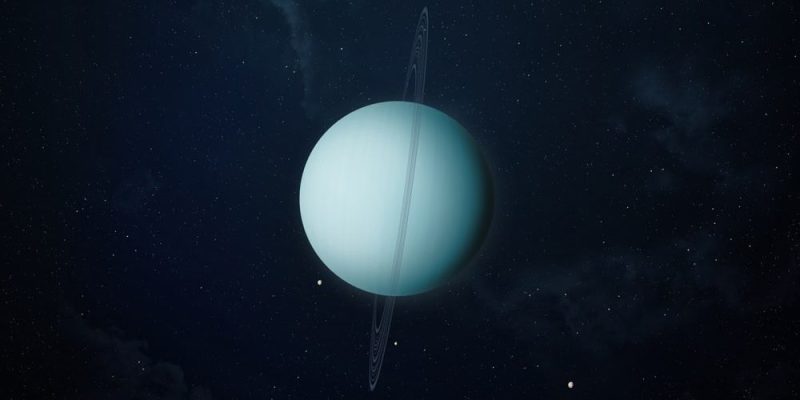
What is Uranus?
Uranus It is the seventh planet in the solar system, counting from the Sun, and is one of the so-called outer planets that is, it is located beyond the asteroid belt that exists between Mars and Jupiter. Together with Jupiter, Saturn and Neptune, it makes up the giant or Jovian planets, but unlike the first two it is not a gas giant, but rather an icy one: the atmosphere of Uranus is the coldest in the solar system, with a temperature which is around -224 °C.
Identified with the astronomical symbol ⛢, this planet is named after the Greco-Roman god of the sky, the titan Uranus (Uranus either Caelus for the Romans), father of Cronus (Saturn) and grandfather of Zeus (Jupiter). Together with Gaia, goddess of the Earth, Uranus was the progenitor of the lineage of Titans, the primitive gods of the Greek imagination, associated with natural forces.
Although its bluish glow is observable from the Earth’s surface with the naked eye, the planet Uranus It was discovered in 1781 by the German-British astronomer William Herschel (1738-1822). It was the first planet known thanks to the help of a telescope, since its brightness is opaque and its orbit slow, which is why it was not included among the five classical planets observed since Antiquity.
Initially it was assumed that it was a comet and its planetary confirmation represented a revolution in the astronomy of the time, since it expanded the established limits of the solar system.
His first name was Georgium Sidus (“the star of George”) in homage to King George III of England, but it was soon replaced by Herschel, in homage to its discoverer. Finally, the name Uranus was proposed by the German astronomer Johann Elert Bode (1747-1826), who proposed that the new planet follow the mythological order of parents and children established between Jupiter and Saturn.
The first and only time a human-made artifact visited Uranus was in 1986 when the American probe Voyager 2 passed by and took numerous photographs.
See also: Planets of the solar system
Characteristics of Uranus

The planet Uranus is characterized as follows:
- It is the seventh planet in the solar system, counting from the center outwards, and is also the third in terms of size and the fourth in terms of total mass. Its radius is four times that of the Earth and its fairly low density (1.3 times that of water), despite having an equivalent to fourteen times the Earth’s mass.
- Given that It is located 2.9 billion kilometers from the Sun (19 times the distance from Earth), it is a frigid place, with a cloudy atmosphere and a frozen core, composed mainly of hydrogen, helium, water and other volatile substances.
- It has a small rocky core wrapped in the layers of the atmosphere. In its upper atmosphere, methane gas predominates (hence its blue-green color) and winds of up to 900 km/h can occur.
- It has a magnetosphere and a ring system (13 rings), as well as numerous satellites (27 to date). However, the rings orbit at an unusual inclination compared to the rest of the planets, since Uranus has a very inclined axis of rotation with respect to the orbital plane, so that its poles are almost where most planets They have the equator.
- Its orbit is slow, long and almost circular; to the planet It takes 84 years to orbit the Sun. Likewise, its direction of rotation is clockwise, which is a rarity among known planets, and it takes about 17.24 hours to complete one rotation on itself.
- In astrology, Uranus is associated with the zodiac sign of Aquarius and to genius, originality, rarity, sudden changes and scientific discoveries. It is also related to madness, nervous disorders and the traits of being masculine, dry, cold, diurnal, fertile and evil are attributed to it.
The moons of Uranus
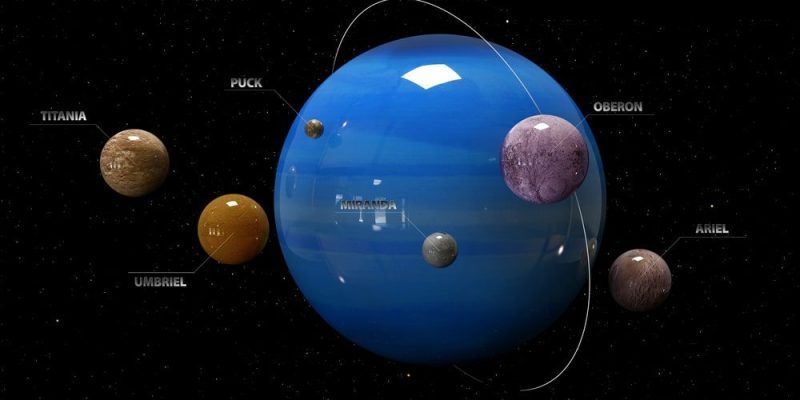
Uranus It is orbited by around 27 natural satellites equivalent to the Earth’s Moon, named after characters from the literary work of William Shakespeare and Alexander Pope. It is a very low-mass lunar system, whose main satellites are five:
- Miranda. With a diameter equivalent to 14% of the lunar diameter, it is the smallest of the five satellites of Uranus and has an area of 700,000 km2. Its surface is marked by traces of some possible ancestral impact, and it is composed mainly of ice, siliceous rocks and methane compounds.
- Ariel. With a diameter equivalent to 33% of the lunar diameter, it is a very little-known satellite (only 35% of its surface has been explored) despite the fact that it was discovered in 1851. Like the Earth’s Moon, it has synchronous rotation, that is, shows Uranus the same face continually.
- Umbriel. With a diameter equivalent to 34% of the lunar diameter, it is the largest known satellite of Uranus, with a total diameter of 1172 km.2. It has a surface of large craters, some up to 210 km in diameter, and only about 40% of its surface is mapped.
- Titania. With a diameter equivalent to 45% of the lunar diameter, this satellite has its orbit within the magnetosphere of Uranus, and is composed of an ice mantle that surrounds a rocky core. Like Umbriel, its surface is full of impact craters and about 40% of its total surface is known.
- Oberon. With a diameter equivalent to 44% of the lunar diameter, this satellite is the ninth most massive in the solar system, and orbits Uranus at a distance of 584,000 km. Her name, as well as that of Titania, Miranda and Ariel, comes from the play The storm by William Shakespeare.
Uranus and Neptune
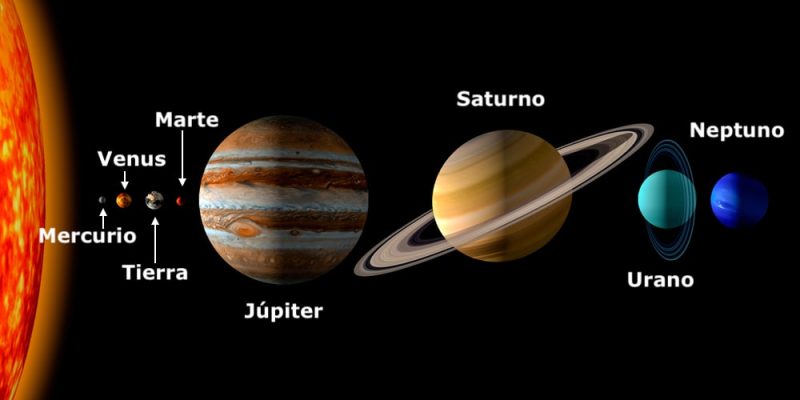
Uranus and Neptune are known as the “frozen giants” of the solar system. This is because they are the furthest planets from the Sun and therefore those that receive the least heat, which is why their surfaces are covered with thick layers of ice. Furthermore, unlike the other two outer planets, Jupiter and Saturn, both Uranus and Neptune have rocky cores.
These two planets are quite similar in composition and barely different in terms of size and density. Uranus is slightly larger in proportions, but has a lower mass and therefore lower density. Uranus is the coldest planet in the solar system and Neptune is considerably warmer. Finally, these planets are distinguished in their orbital orientation, in the case of Uranus it is quite anomalous. Some hypotheses suggest that this could be due to some type of past astronomical impact.
The discovery of Neptune in the 19th century is indirectly due to that of Uranus: When the French astronomer Alexis Bouchard (1767-1843) published astronomical tables of the orbit of Uranus, it became evident that some celestial body was disturbing its path.
In 1843 the English astronomer John Couch Adams (1819-1892) deduced that it must be a new planet, so he proceeded to calculate its orbits and thus began an astronomical competition to observe the new planet. Finally, in 1846, the French mathematician Urbain Le Verrier (1811-1877) and the German astronomer Johann Galle (1812-1910) were the first to observe Neptune.
Uranus Images
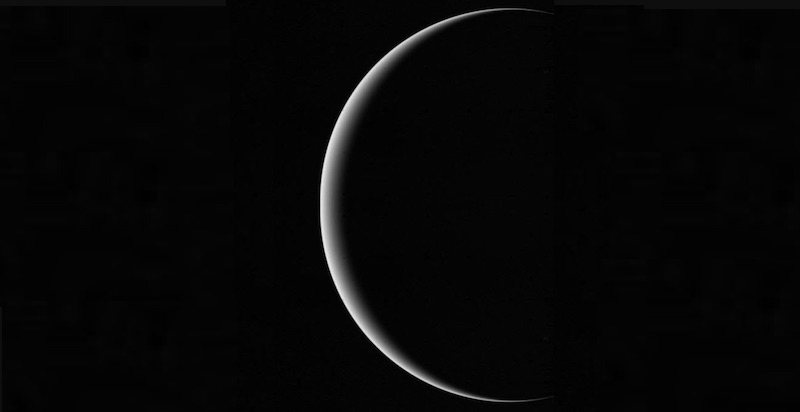
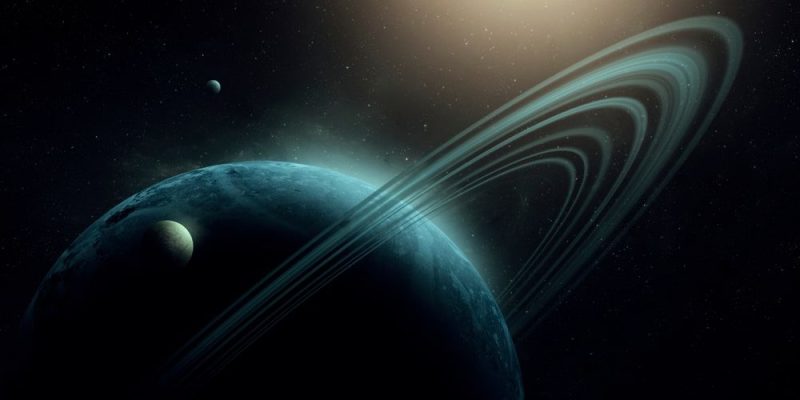
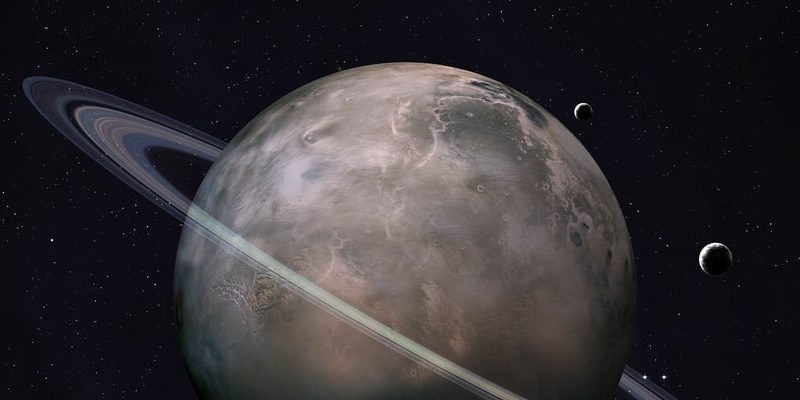
Continue with: Moons of Jupiter
References
- “Uranus (planet)” on Wikipedia.
- “Uranus 101” (video) on National Geographic in Spanish.
- “All About Uranus” at NASA Space Place.
- “Uranus, the strangest and most unexplored planet” on BBC News Mundo.
- “Uranus (planet)” in The Encyclopaedia Britannica.





